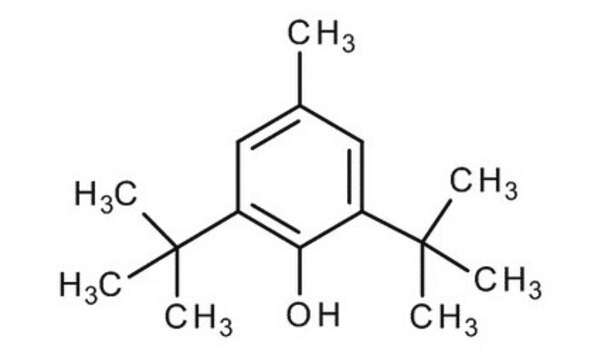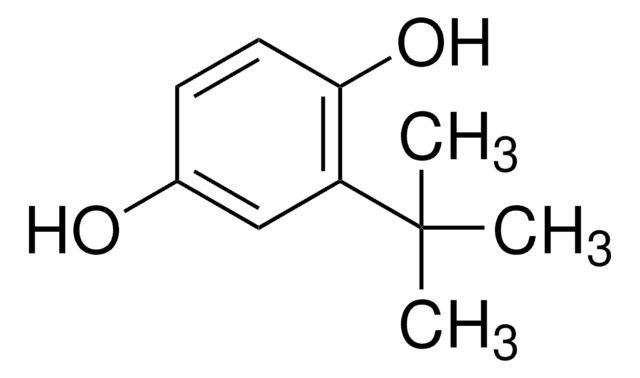1082708
USP
Butylated hydroxytoluene
United States Pharmacopeia (USP) Reference Standard
Synonym(s):
2,6-Di-tert-butyl-4-methylphenol, 2,6-Di-tert-butyl-p-cresol, BHT, Butylated hydroxytoluene, Butylhydroxytoluene, DBPC
About This Item
Recommended Products
grade
pharmaceutical primary standard
vapor density
7.6 (vs air)
vapor pressure
<0.01 mmHg ( 20 °C)
API family
butylated hydroxytoluene
autoignition temp.
878 °F
manufacturer/tradename
USP
bp
265 °C (lit.)
mp
69-73 °C (lit.)
application(s)
pharmaceutical (small molecule)
format
neat
SMILES string
Cc1cc(c(O)c(c1)C(C)(C)C)C(C)(C)C
InChI
1S/C15H24O/c1-10-8-11(14(2,3)4)13(16)12(9-10)15(5,6)7/h8-9,16H,1-7H3
InChI key
NLZUEZXRPGMBCV-UHFFFAOYSA-N
Looking for similar products? Visit Product Comparison Guide
General description
Application
- Dutasteride and Tamsulosin Hydrochloride Capsules
Analysis Note
Other Notes
Related product
signalword
Warning
hcodes
pcodes
Hazard Classifications
Aquatic Acute 1 - Aquatic Chronic 1
Storage Class
11 - Combustible Solids
wgk_germany
WGK 2
flash_point_f
260.6 °F - open cup
flash_point_c
127 °C - open cup
Choose from one of the most recent versions:
Certificates of Analysis (COA)
Sorry, we don't have COAs for this product available online at this time.
If you need assistance, please contact Customer Support.
Already Own This Product?
Find documentation for the products that you have recently purchased in the Document Library.
Customers Also Viewed
Our team of scientists has experience in all areas of research including Life Science, Material Science, Chemical Synthesis, Chromatography, Analytical and many others.
Contact Technical Service







